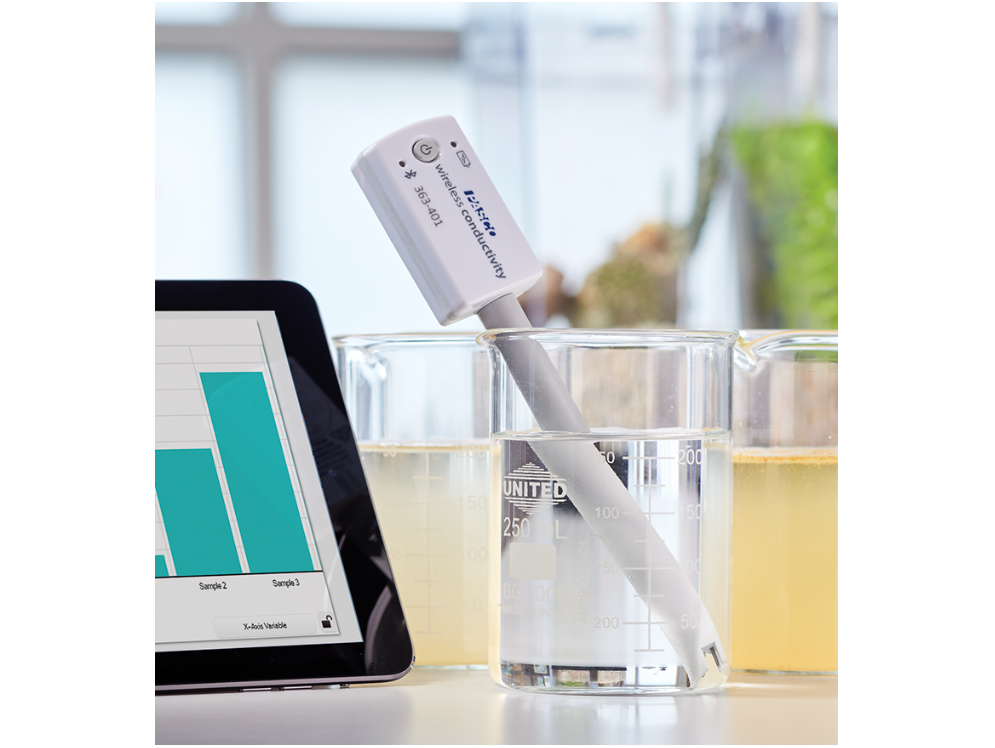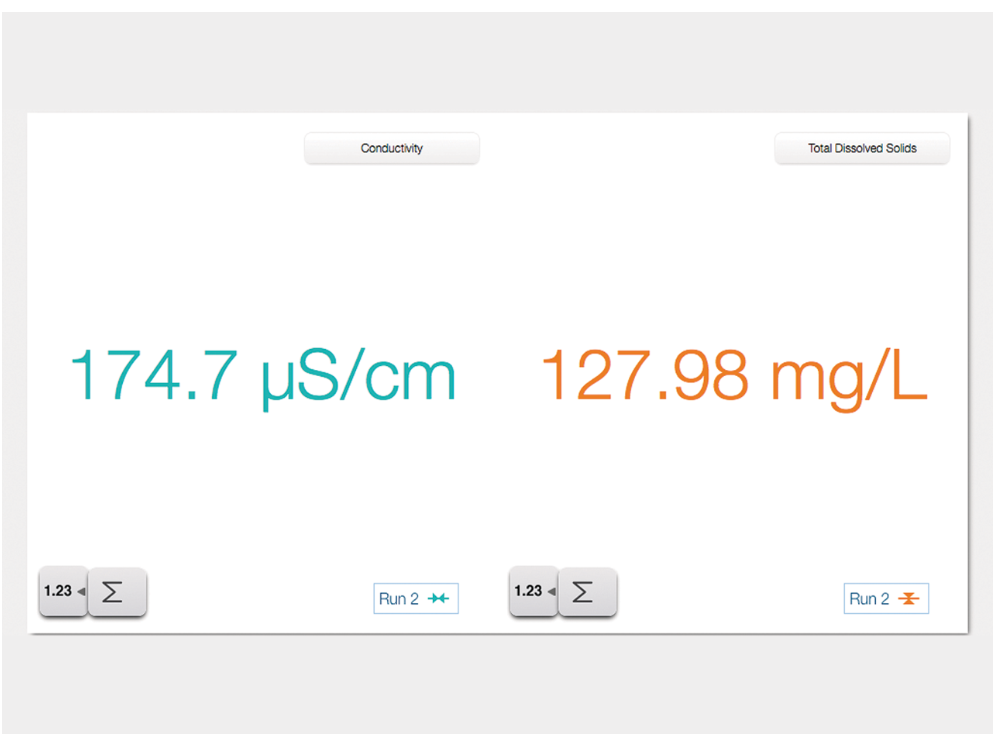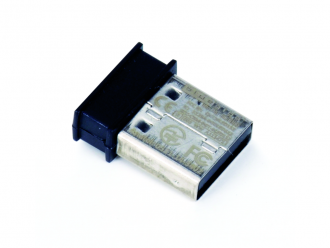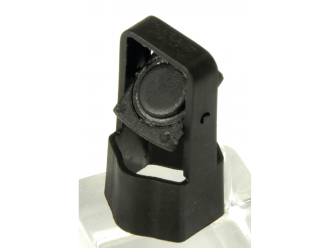Description
The Wireless Conductivity Sensor measures the electrical conductivity of an aqueous solution. It is ideal for investigating the properties of solutions, including total dissolved solids (TDS) for water quality inquiry. Because it is temperature compensated, calibrations are less frequent and can be applied across a range of temperatures. With a range of 0 to 20,000 µS/cm, this sensor can be utilized for chemical, biological, and environmental studies.
Teacher tip: To measure brackish or marine samples above sensor range, perform a 10:1 distilled to salt water solution then multiply sample conductivity x 10.
Typical Applications
Conductivity (the ability of a liquid to conduct electrical current) is one of the most common measurements in biological, chemical and environmental studies. This sensor measures the total concentration of ions in solution.
- Water quality investigations
- Studying the effects of pollution on water
- Measuring Total Dissolved Solids (TDS)
- Investigating solution properties
- Performing conductometric titrations
- Diffusion of ions through membranes
- Differences between ionic and molecular compounds
- Comparing strong and weak acids
Experiment Library
Perform the following experiments and more with the Wireless Conductivity Sensor.
Visit PASCO’s Experiment Library to view all activities for this product.
Features
- Simplicity: just pair and go, no cables and adapters to manage
- Variable sampling rate for capturing small fast changes or experiments that run for hours, days, or weeks.
- Features convenient Bluetooth wireless connectivity and long-lasting coin cell battery
- Logs conductivity data directly onto the sensor for long-term experiments. (Logging feature required PASCO Capstone 1.6 or later or SPARKvue 2.5 or later)
- Battery life >1 year
- Dust, dirt and sand proof and water-resistant (1 meter for 30 minutes)
How It Works
Conductance is the reciprocal of resistance. In this case, the Wireless Conductivity Sensor determines the conductance of an aqueous solution by measuring the current flowing through the circuit created when a voltage is applied to a 2-cell electrode submerged in the solution.
The electrode cell is constructed from insulating material embedded with pieces of platinum that are placed at a fixed distance apart and serve as sensing elements.
Because conductivity is dependent on temperature, the Wireless Conductivity Sensor has built-in temperature compensation.
What’s Included
Product Specifications
| Range | 0 to 20,000 μS/cm (0 to 10,000 mg/L TDS) |
| Accuracy from 200 µS/cm to 20,000 µS/cm | ± 10% of value |
| Accuracy below 200 µS/cm | qualitative |
| Resolution | 0.1 µS/cm |
| Response time | 95% of final reading in 5 seconds or less |
| Probe Environmental Tolerance (Min-Max) | 0-80°C |
| Temperature Compensation | 0-35°C |
| Probe Material | The probe is composed of 300 series stainless steel and glass-filled polypropylene |
| Waterproof | IP-X7 rated (1m for 30min) |
Battery & Logging
| Stored Data Points Memory (Logging) 1 | >35,000 |
| Battery – Connected (Data Collection Mode) 2 | >195 hr (2-3yrs of normal classroom use) |
| Battery – Logging (Data Logging Mode) 3 | >3 days |
| Battery Type | Coin |
1 Minimum # of data points with all measurements enabled, actual results depend on enabled measurements.
2 Continuous use in a connected state until battery failure, actual results will depend on sample rate, active measurements, and battery condition.
3 Logging until battery failure, actual results will depend on sample rate, active measurements, and battery condition.
* Normal classroom use is the sensor in active use for 20min/lab for 120 lab periods/yr.
Recommended Accessories
| Electrode Support | PS-3505 |
Replacement Parts
| Coin Cell Battery Pack | PS-3504 |
Also Available
| USB Bluetooth Adapter | PS-3500 |







